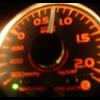has anyone ever seen this done
Announcements
-
Similar Content
-
Latest Posts
-
By Murray_Calavera · Posted
I don't understand how this hasn't boiled down to - Upgrade the turbo when you have everything required. ECU, injectors, fuel pump, turbo, etc. Do it all at once. If you don't have everything required, just enjoy the car as it is and keep saving up your pennies. -
Sounds like you've got an interesting adventure ahead here with local support if you have trouble! My guess is that, unboosted, you will be OK with a small upgrade like -9. What will happen is that once the stock ECU sees more airflow than it expects it will add a heap of fuel and pull a heap of timing to be safe because it can't understand how it could get that much air without there being an issue. You will see clouds of black smoke and it won't pull hard through the midrange and top end. So, overall it will be a bit frustrating but should be OK. If you are still nervous set the base timing back 2o through the CAS, but it will be even more sluggish everywhere. As said above through...this is not my guarantee your engine won't be blown into a million pieces, leaving you looking for very hard to find parts A better idea is get a computer with logging ASAP, wire in a wide band O2 sensor and a use remote tuner. I've done multiple cars this way and while it is not as good as a specific tune on a dyno they can get it 90% right. I'd suggest if you can afford an R33 GTR these days you can afford an ECU and tune. And if you can't afford that you sure won't be able to afford the rebuild if it goes bad in the meantime,.
-
Yeah it would be nice if someone took the time to put that sort of information together, but there are a lot of variations in looms. I think you are making this way hard for yourself if you just want to get it running....sourcing an SR20 with the right wiring will be a billion times easier than matching the RB loom to an S15 chassis. If you do end up going this way, you just need to trace every wire in the loom with a multimeter, 95% of them will go to a location you can confirm at the ECU.....and then post it up for the next person who needs it
-
Just top it up with water, and keep a general idea of how much you added. It is normal for water to be pushed into and pulled out of the reservoir through the cap, and it should not be more than half full or it will be likely to overflow when hot. Any decent mechanic can do a pressure test of the cooling system to confirm if you have a leak. Keep in mind if it is only leaking a little and when hot it may well evaporate before you see it hit the ground
-
I'd ask the shop what they used and use that. Mixing coolants is sometimes OK, sometimes not, and you have know the details of each coolant to know whether it's a good idea or not.
-




Recommended Posts
Create an account or sign in to comment
You need to be a member in order to leave a comment
Create an account
Sign up for a new account in our community. It's easy!
Register a new accountSign in
Already have an account? Sign in here.
Sign In Now